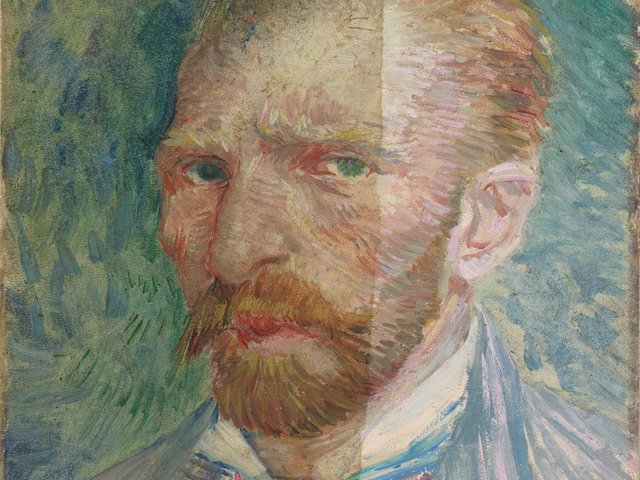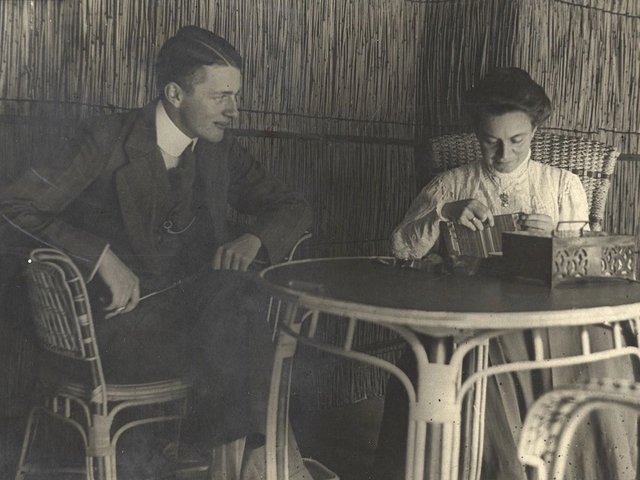A century ago, when Van Gogh’s fame was still in its infancy, the Belgian designer and architect Henry van de Velde planned an astonishing gallery in the centre of what would have been one of the first museums of modern art.
Although never built as originally intended, this relatively little-known monumental scheme was intended to provide a dramatic setting for the collection of Helene Kröller-Müller.
We have identified the Van Gogh works on the walls of Van de Velde’s scheme—and can now present a reconstruction of what the display might have looked like. The original, made with drawing chalk, is dated by the Kröller-Müller Museum to around 1923.
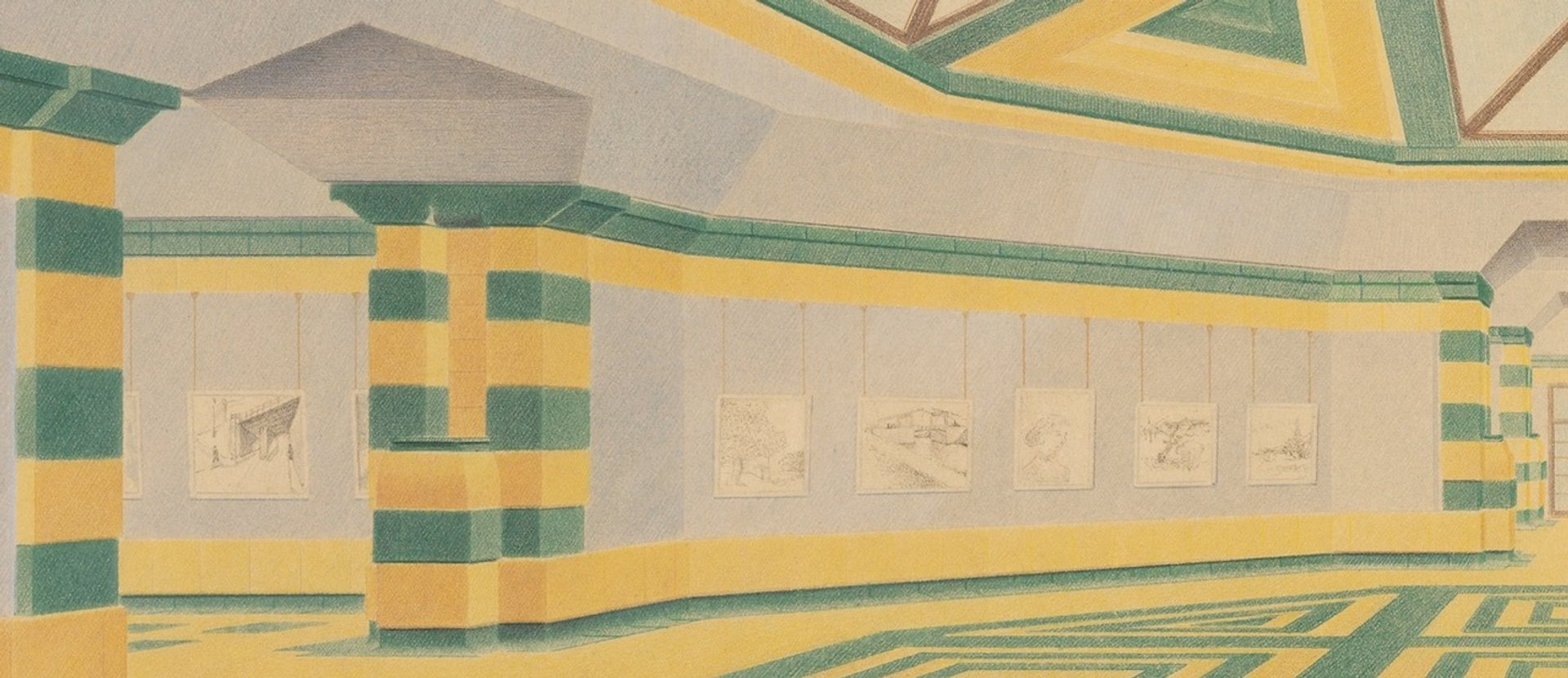
Detail of Henry van de Velde’s scheme for a Van Gogh gallery in Helene Kröller-Müller’s projected Grand Museum. © Kröller-Müller Museum, Otterlo. Photo: Marjon Gemmeke
Taking the left half of the scheme, the painting on the far left, in a side gallery, is The Viaduct (October 1888). There is then a row of five works in the central hall: Orchard with Pear Trees in Blossom (April 1888), The Langlois Bridge (March 1888), Portrait of a Young Woman (June-July 1890), Gardener by an Apple Tree (July 1883) and a version of A Wheatfield, with Cypresses (September 1889).

Our reconstruction of the sequence of Van Gogh works on the left half of Henry van de Velde’s scheme: The Viaduct (October 1888, private collection); Orchard with Pear Trees in Blossom (April 1888, private collection), The Langlois Bridge (March 1888), Van Gogh Museum, Amsterdam, Portrait of a Young Woman (June-July 1890, Kröller-Müller Museum, Otterlo), Gardener by an Apple Tree (July 1883, several collections) and a version of A Wheatfield, with Cypresses (September 1889, National Gallery, London).
Only one of the pictures was actually in Kröller-Müller’s collection: Portrait of a Young Woman. Gardener by an Apple Tree is a relative small lithograph, but Van de Velde blew it up to the size of a painting.
The plan is revealing in showing how Van de Velde envisaged the Van Goghs would be framed. They appear to be presented in plain white frames, a style that was popular among avant-garde artists in Van Gogh’s time. Although elaborate gold frames had become the norm for his paintings by the 1920s, Van de Velde wanted to revert to something much simpler.
Our reconstruction shows just one quarter of the huge symmetrical central hall. There would have been 20 Van Goghs in this room, with the remainder in two side galleries. Dominating the architecture is extremely bold green-and-yellow geometric patterning —on the floor, the apparent skylight and the corners.
Van de Velde’s scheme can be regarded as an early example of Art Deco, although the term was only invented a few years later with the 1925 Paris exhibition Arts Décoratifs.

Helene Kröller-Müller riding (about 1900). © Kröller-Müller Museum, Otterlo
Helene Müller (1869-1939), the daughter of a wealthy German industrialist, had in 1888 married Anton Kröller, a Dutch shipping entrepreneur. With her wealth and interest, she soon became one of Europe’s major collectors of modern art.
By the early 1920s Kröller-Müller (the surname she took after her marriage) had amassed around 80 Van Gogh paintings and 50 drawings, making her by far the largest collector of the artist’s work. She had also acquired many works by early 20th century artists.
Wanting to establish a museum of modern art, Kröller-Müller had in 1918 approached the Dutch architect Hendrik Berlage. But they failed to get on and two years later she passed the commission to Van de Velde.

Ernst Kirchner’s woodcut Portrait of Henry van de Velde (1917)
Van de Velde had been a very early admirer of Van Gogh. On his honeymoon in 1894, four years after Vincent’s death, he and his new wife met the artist’s sister-in-law Jo Bonger and bought a drawing, Field with Poppies (June 1889, private collection).
The following year Van de Velde wrote a favourable review in L’Art Moderne of an early Van Gogh exhibition held in Amsterdam. In 1898, in The Hague, he designed the interior of the Arts & Crafts Gallery. This commercial gallery, which used the English title, held its inaugural exhibition on Van Gogh. A shared love of Van Gogh helped to bring Kröller-Müller and Van de Velde together in a cooperative arrangement.
In 1921 the foundation stone was laid for the so-called Grand Museum, which was set in sparsely-populated heathland near Otterlo n the east of the Netherlands. Huge quantities of granite were imported from Germany, the foundations were laid and construction of the walls began. Van de Velde’s conception of the interior was refined.
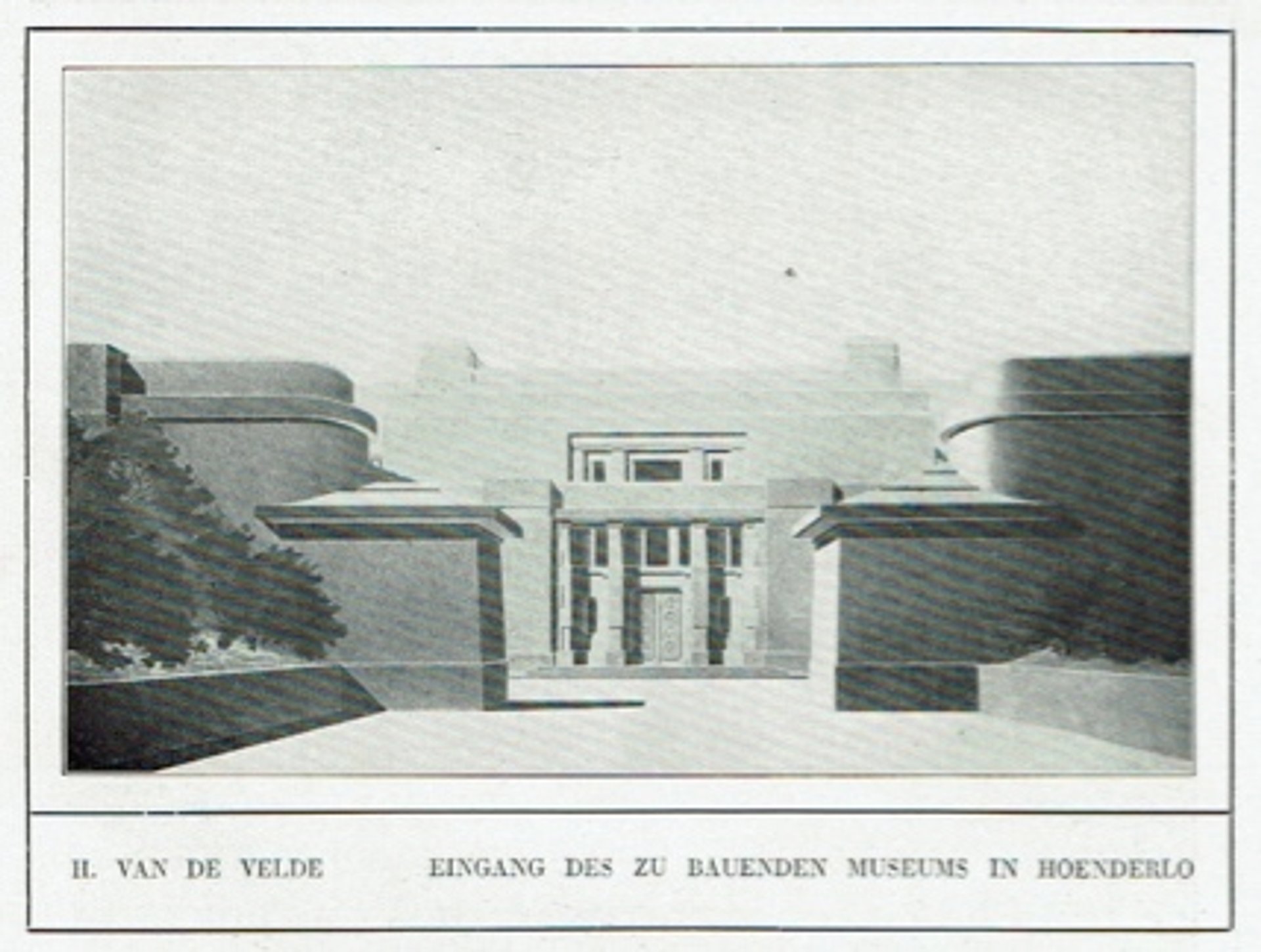
The entrance to Henry van de Velde’s Grand Museum, the architect’s impression in a book he designed for Helene Kröller-Müller.
Photo: H. Kröller-Müller, Die Entwicklung der Modernen Malerei (Leipzig, 1925, p. 151)
In 1922 in the company of Helene’s husband Anton faced serious financial problems and work on the museum came to an abrupt end. In the end, work was resumed some years later on a much less ambitious plan, and the Kröller-Müller Museum, redesigned by Van de Velde, was opened very nearby in 1938. By this time Kröller-Müller had donated her collection to the Dutch state.
Kröller-Müller died a year after the opening of her museum. Her body was laid out in the Van Gogh gallery, a much more conventional space than that originally envisaged by Van de Velde.
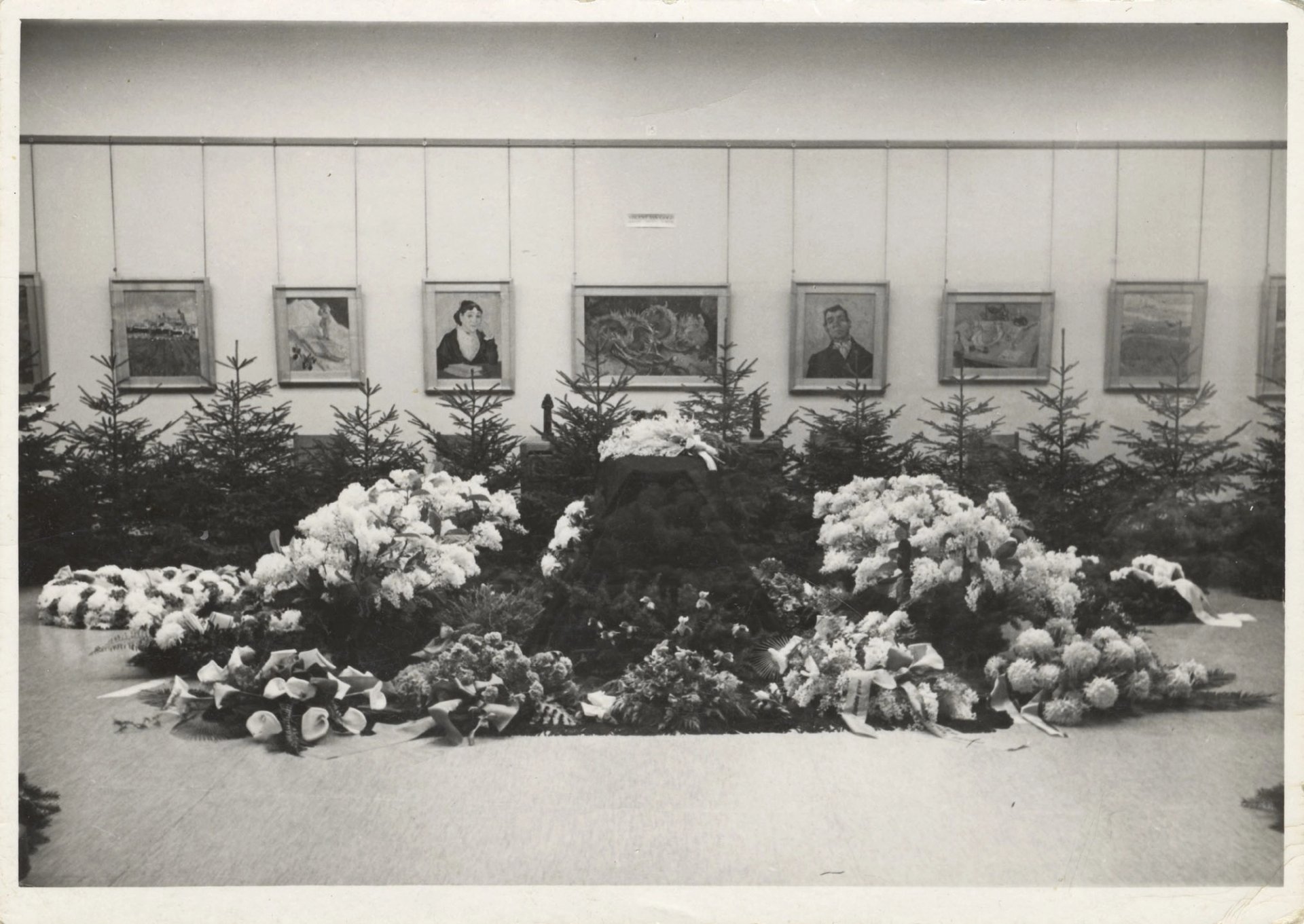
Helene Kröller-Müller’s body laid out in the Van Gogh gallery, Kröller-Müller Museum, Otterlo (December 1939).© Kröller-Müller Museum, Otterlo
The Kröller-Müller Museum building has since been expanded and today holds one of the most important Dutch collections of modern art. It also has by far the greatest museum collection of Van Goghs, after that of the Van Gogh Museum in Amsterdam.
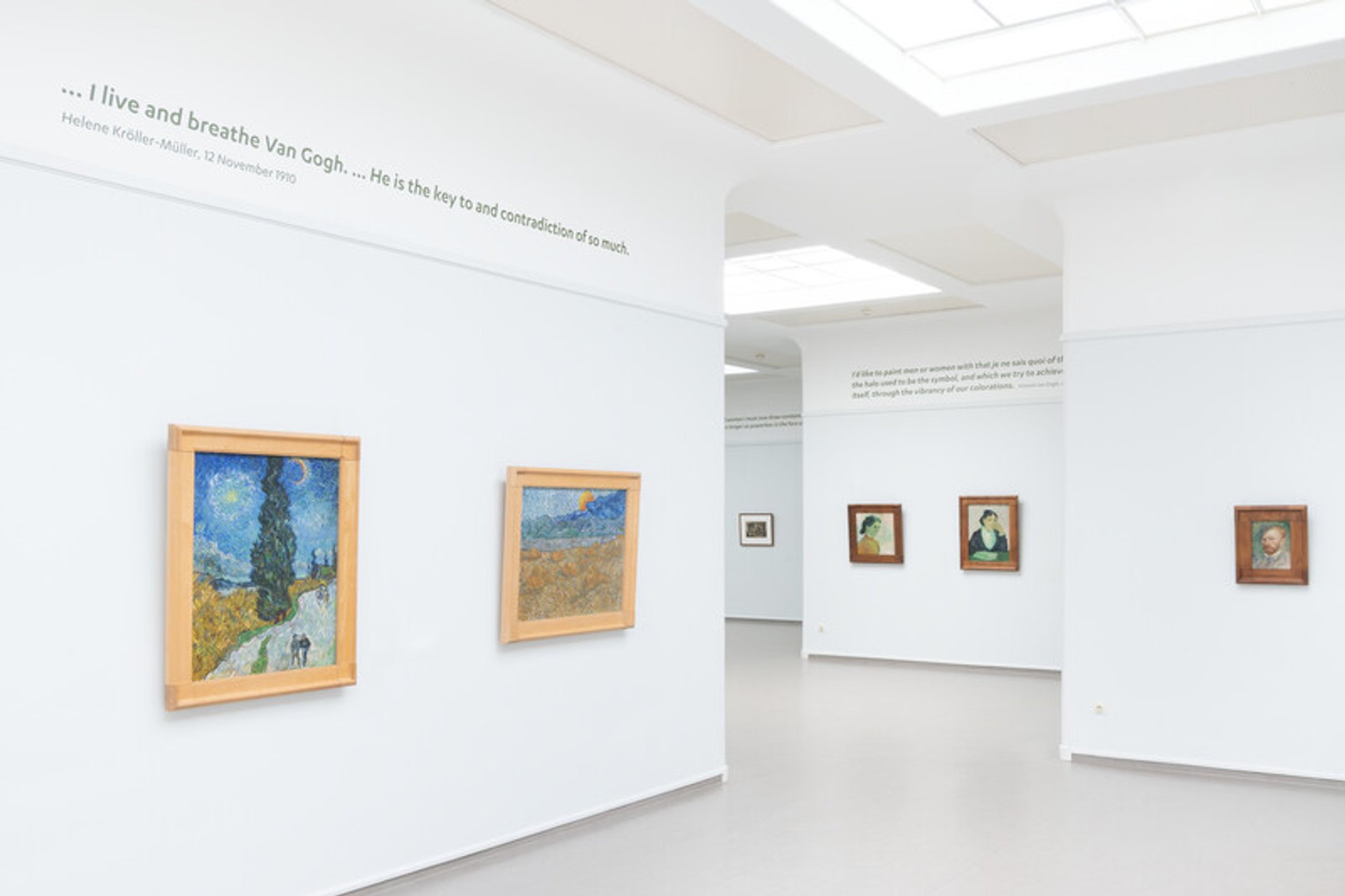
A recent Van Gogh display at the Kröller-Müller Museum, Otterlo
© Kröller-Müller Museum, Otterlo. Photo: Marjon Gemmeke
Although Van de Velde (1863-1957) is now not as well known as he should be, he was certainly one of the most talented designers of the early 20th century.
He started off as an artist in the 1880s, influenced by Van Gogh and his peers, and particularly by Georges Seurat and the Neo-Impressionists. By the 1890s he had turned towards design.
What is particularly striking is the sheer variety of Van de Velde's work. His completed projects included: the interiors of third-class carriages for Belgian railways, a desk for King Leopold III, packaging for Tropon cocoa, fittings for a Cuban cigar shop in Berlin, a design for a large hairdressing salon, an art school in Weimar, the interior of a tennis club in Chemnitz, ladies’ Reform dresses, furniture, fabrics, bookbindings, ceramics, jewellery and much, much more.
Many of the clients were in the art world: the artist Curt Herrmann, the art historian Julius Meier-Graefe, the Paris dealer Siegfried Bing (whose L’Art Nouveau gallery gave design history the term), the Berlin dealer Paul Cassirer, the writer Harry Kessler and the collector of modern art Karl Osthaus. All six of these distinguished men owned some works by Van Gogh.
In 1953 Van de Velde, then 90, made his final visit to the Kröller-Müller Museum which had actually been built. Although offered the chance to once again look at the foundations of his Grand Museum, started just over 30 years earlier, he declined, admitting that it would be "too upsetting".
And how would Van de Velde’s 1923 plan have worked for Kröller-Müller's Van Goghs? His central hall would undoubtedly have provided a dramatic heart for the Grand Museum, but one fears that his architecture would have swamped the art. Although the white frames would have been simple and appropriate, the interior setting would have been quite the reverse.
Other Van Gogh news
The Van Gogh Museum turned itself into a barber’s shop on 19 November, to protest against the Dutch government’s Covid decision to allow the reopening of hair salons, gyms and brothels —but not museums (or cinemas and theatres).
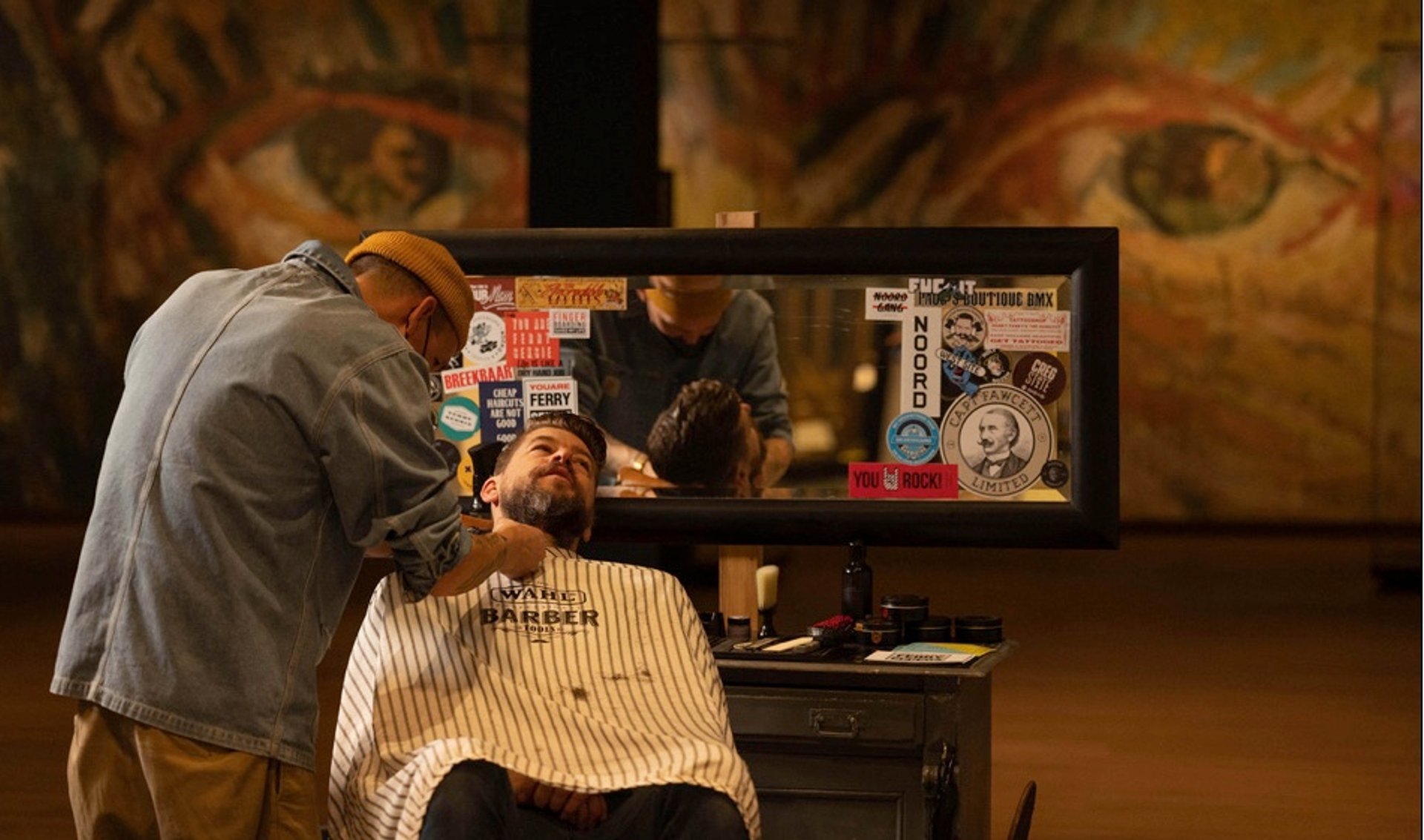
The Van Gogh Museum opened a one-day barber shop on 19 January, in a protest organised by Kapsalon Theater against the continued closure of museums under Covid regulations. © Van Gogh Museum, Amsterdam (photograph Maurice van der Meijs)
In a playful protest organised by Kapsalon Theater, the Amsterdam museum invited barber Ferry Seksie and nail artists Loes Appels and Robbin Wilms to offer their services (€33 for a cut and €25 for a basic manicure), while the museum collection remained closed. “We wanted to make the point that a museum is a safe visit and we should be open,” Van Gogh Museum director Emilie Gordenker told AFP.






